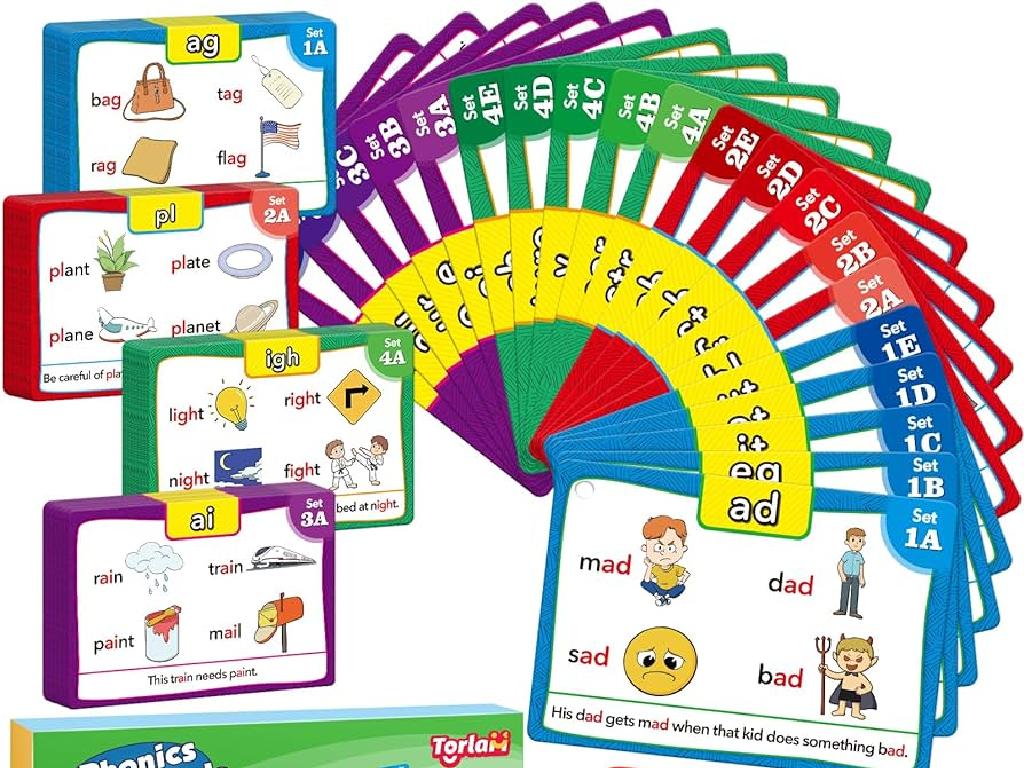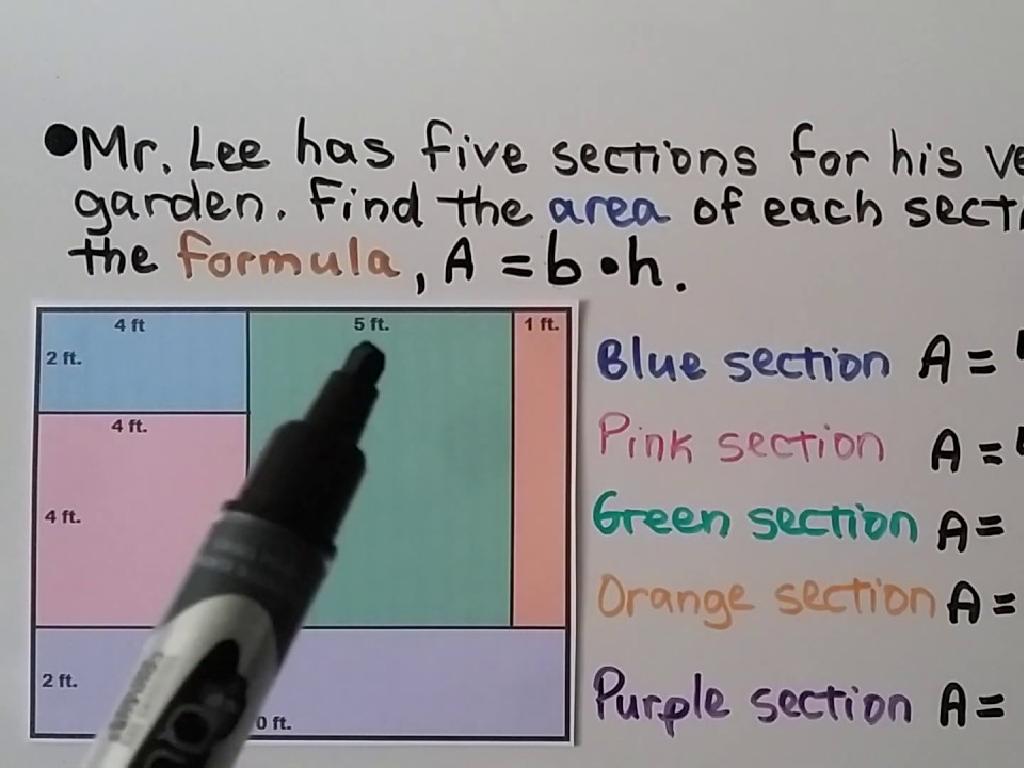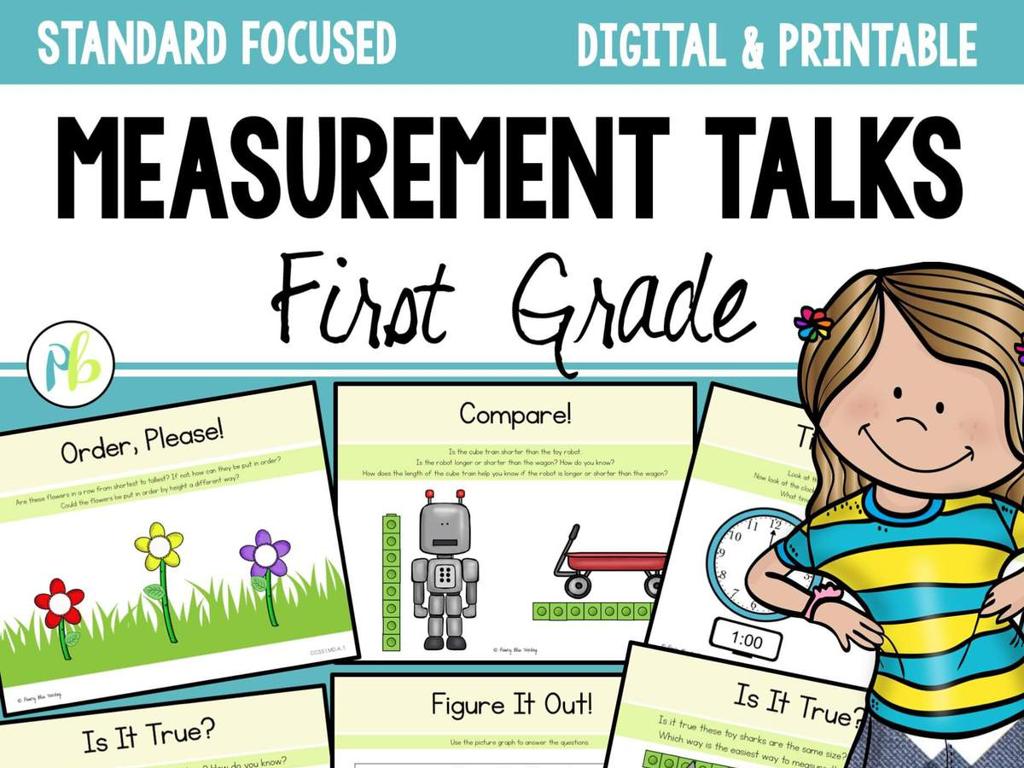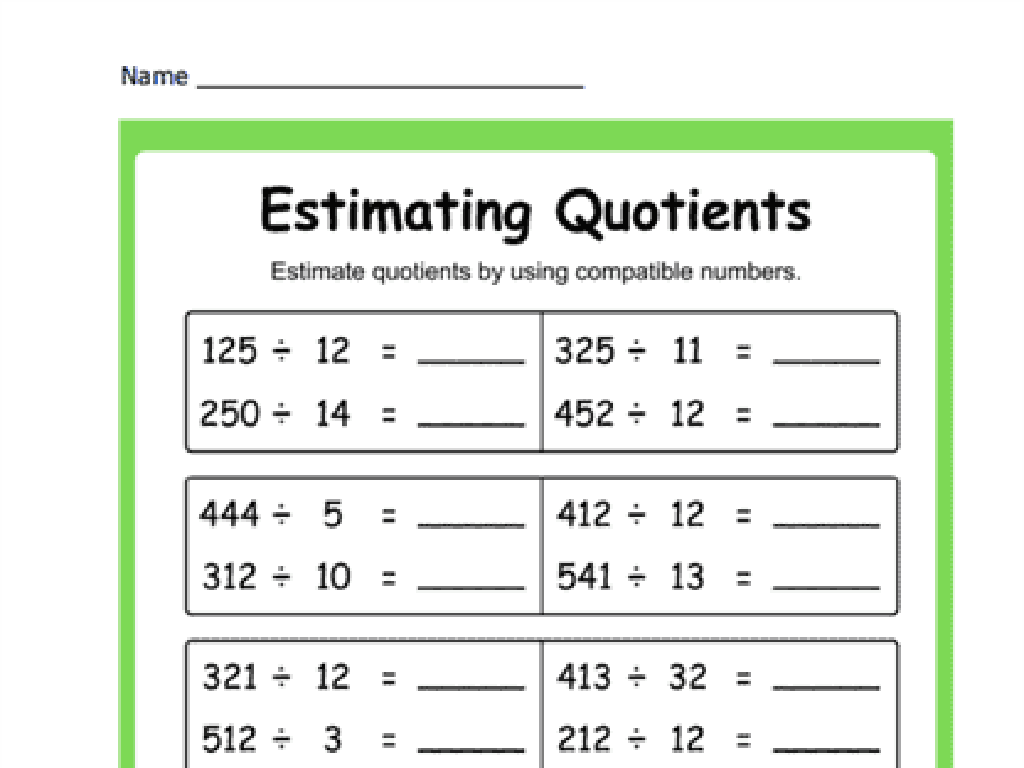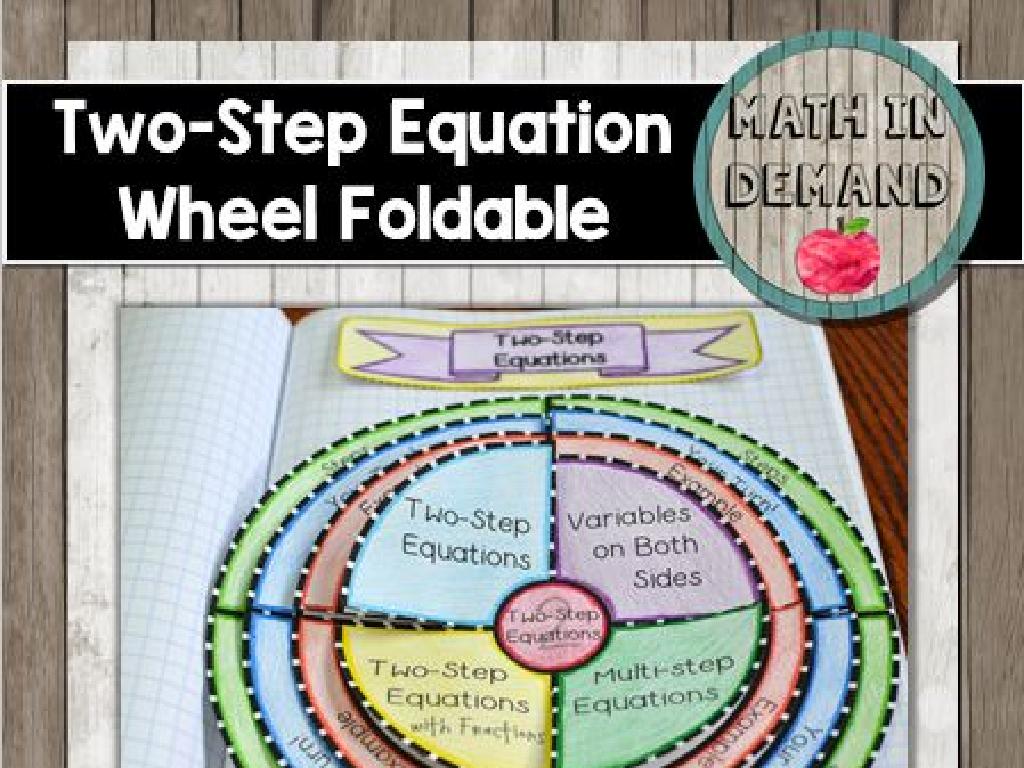Relate Multiplication And Division For Arrays
Subject: Math
Grade: Third grade
Topic: Understand Division
Please LOG IN to download the presentation. Access is available to registered users only.
View More Content
Relating Multiplication & Division with Arrays
– Multiplication & division are linked
– If 3×4=12 in multiplication, then 12÷4=3 in division
– Arrays show this relationship clearly
– Arrays help us visualize and organize objects for easy counting
– Arrays: Rows and columns of objects
– For example, 3 rows of 4 apples show both 3×4 and how 12 apples can be divided into 3 groups of 4
– Today’s goal: Connect multiplication & division
|
This slide introduces the concept that multiplication and division are two sides of the same coin, especially when visualized through arrays. Arrays are a helpful tool for students to see the concrete relationship between these operations. By arranging objects into rows and columns, students can easily count the total (multiplication) and also see how the total can be divided into equal groups (division). Today’s goal is for students to understand and apply this relationship by using arrays. Activities can include creating arrays with physical objects, drawing arrays, and solving problems that require flipping between multiplication and division.
Understanding Arrays in Multiplication and Division
– Arrays organize objects
– Think of arrays like a neat classroom with desks in rows and columns.
– Rows have equal objects
– If one row has 5 desks, all rows will have 5 desks.
– Arrays simplify counting
– It’s easier to count desks when they’re in lines: 5, 10, 15, and so on.
– Arrays link multiplication and division
– Knowing 3 rows of 5 desks is 15 helps us divide 15 desks into 3 equal rows.
|
Introduce the concept of an array as a visual tool to help students understand and organize objects. Explain that in an array, objects are arranged in rows and columns, and each row has the same number of objects. This makes it easier to count or group objects, which is a fundamental skill in multiplication and division. Use relatable examples, such as arranging desks in a classroom or fruits in a box, to illustrate the concept. Emphasize how arrays can be used to represent multiplication (e.g., 3 rows of 5 is 3 x 5) and division (e.g., 15 desks divided into 3 equal rows is 15 ÷ 3). Encourage students to create their own arrays with classroom items for hands-on learning.
Multiplication with Arrays
– Multiplication as repeated addition
– Think of it like adding 4 three times: 4 + 4 + 4
– Arrays help us multiply
– Count the rows and columns to find the total
– Example: 3 rows of 4
– 3 rows of 4 objects is 3 x 4
– Multiplying with arrays is fun
|
This slide introduces the concept of multiplication using arrays, which helps students visualize the process as repeated addition. Start by explaining that multiplication is a shortcut for adding the same number several times. Show how an array a set of objects arranged in rows and columns can make this process easier by simply counting the total number of objects. Use the example of 3 rows with 4 objects in each to illustrate 3 times 4. Encourage students to draw their own arrays and practice this method with different numbers. This visual approach builds a strong foundation for understanding multiplication and division as related operations.
Division with Arrays
– Division: Splitting into equal parts
– Arrays help visualize division
– Think of an array as a set of rows or columns
– Dividing 12 objects into 3 groups
– How many objects are in each group?
– Equal groups in rows or columns
– Each row or column has the same number of objects
|
This slide introduces the concept of division as the process of splitting a number into equal parts, using arrays as a visual aid. Arrays are a useful tool to help students understand how division works by organizing objects into rows or columns. For example, if we have an array of 12 objects, we can divide them into 3 equal groups by arranging them into 3 rows or 3 columns. This visual representation helps students grasp the concept of equal distribution, which is a fundamental aspect of division. Encourage students to draw their own arrays with different numbers of objects and practice dividing them into equal groups to reinforce the concept.
Relating Multiplication to Division with Arrays
– Multiplication & division are opposites
– Example: 3 x 4 equals 12
– If we have 3 groups of 4, we get 12
– Example: 12 ÷ 3 equals 4
– If we have 12 in total and make 3 groups, each has 4
– Arrays show multiplication & division
– Arrays with rows and columns help visualize groups
|
This slide aims to help students understand the relationship between multiplication and division using arrays. Start by explaining that multiplication and division are opposite operations, meaning they undo each other. Use concrete examples like ‘If 3 times 4 equals 12, then 12 divided by 3 equals 4’ to illustrate this point. Introduce arrays as a visual tool to see this relationship clearly. Arrays are arrangements of objects in rows and columns that can represent both multiplication and division. For instance, an array with 3 rows and 4 columns shows 3 groups of 4, which is multiplication. The same array can be used to divide the total number (12) into 3 equal groups, showing division. Encourage students to draw their own arrays and use them to relate multiplication to division in different scenarios.
Let’s Practice Together: Arrays and Equations
– Solve problems as a class
– Analyze arrays for sentences
– Look at rows and columns to form equations
– Partner up for solutions
– Share ideas and compare answers
– Discuss multiplication & division
– How do arrays show multiplication and division?
|
This slide is designed for an interactive class activity where students will engage in solving array-related problems together. Start by presenting a few array examples to the class and guide them on how to write corresponding multiplication and division sentences. Encourage students to work in pairs to foster collaboration and peer learning. As they work, circulate the room to provide support and ensure understanding. After the activity, bring the class together for a discussion to reinforce the relationship between multiplication, division, and arrays. Possible activities could include creating arrays with physical objects, drawing arrays on graph paper, or using interactive whiteboard software for virtual arrays.
Class Activity: Create Your Own Array!
– Build an array using blocks or stickers
– Write a multiplication sentence for your array
– If you made 3 rows of 4, write 3 x 4 = 12
– Write a division sentence for your array
– How many groups of 4 in 12? Write 12 ÷ 4 = 3
– Present your array and sentences
|
This activity is designed to help students understand the relationship between multiplication and division through the use of arrays. Provide students with blocks or stickers to create arrays on a flat surface. Once they have built their array, guide them to write a multiplication sentence that describes the number of rows times the number of items in each row. Then, help them write a division sentence that shows how the total number of items can be divided into equal groups. Encourage students to share their arrays and sentences with the class to foster a collaborative learning environment. Possible variations of the activity could include using different objects, creating arrays of different sizes, or challenging students to find more than one division sentence for the same array.
Conclusion: Multiplication, Division, and Arrays
– Great job learning today!
– Arrays visualize multiplication/division
– Arrays show rows and columns of objects
– Homework: Create 2 arrays
– Use objects like coins or buttons to make arrays
– Write sentences for each array
– Example: For an array of 2 rows of 4, write ‘2 x 4’ and ‘8 ÷ 4’
|
Students have done well understanding the relationship between multiplication and division using arrays. Arrays are a visual tool that helps students see the connection between these operations. For homework, they should create two arrays using items they have at home, such as coins or buttons. They need to write a multiplication sentence that represents the total number of items in the array (e.g., 2 rows of 4 items is 2 x 4) and a division sentence that shows how the total can be divided into equal groups (e.g., 8 items divided by 4 items per row is 8 ÷ 4). This exercise will reinforce their understanding and help them visualize the concepts learned in class.

